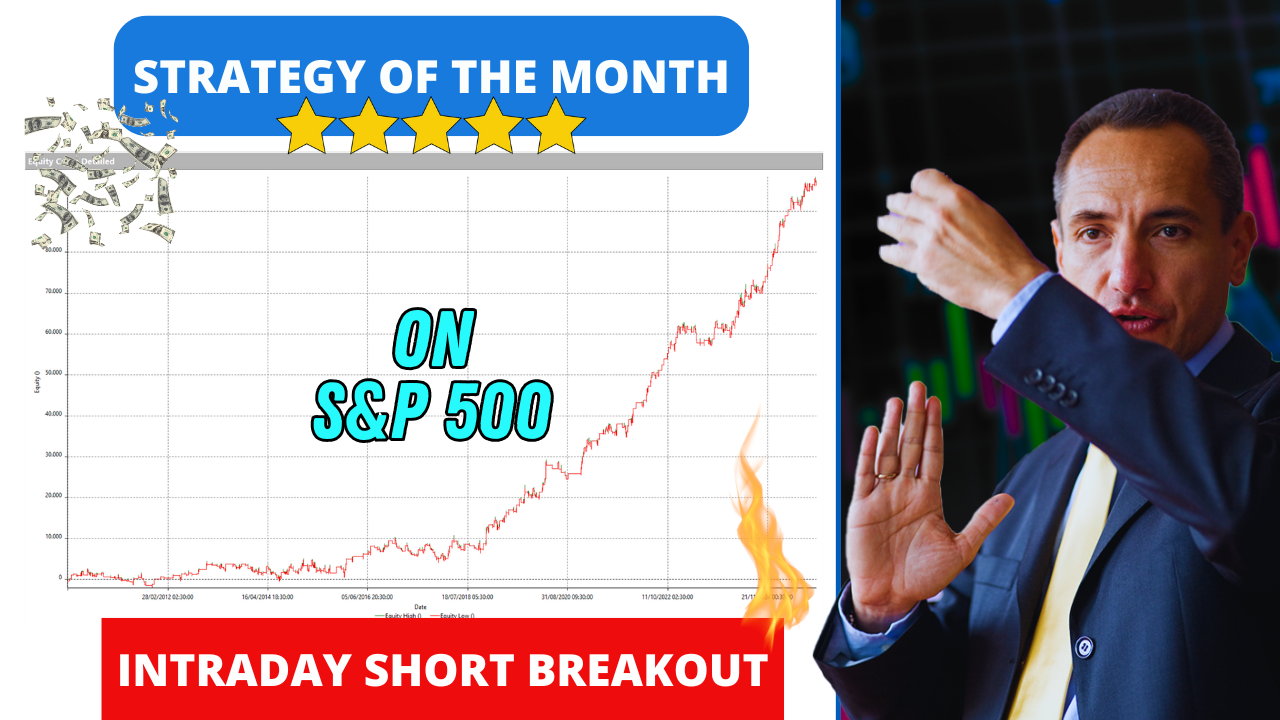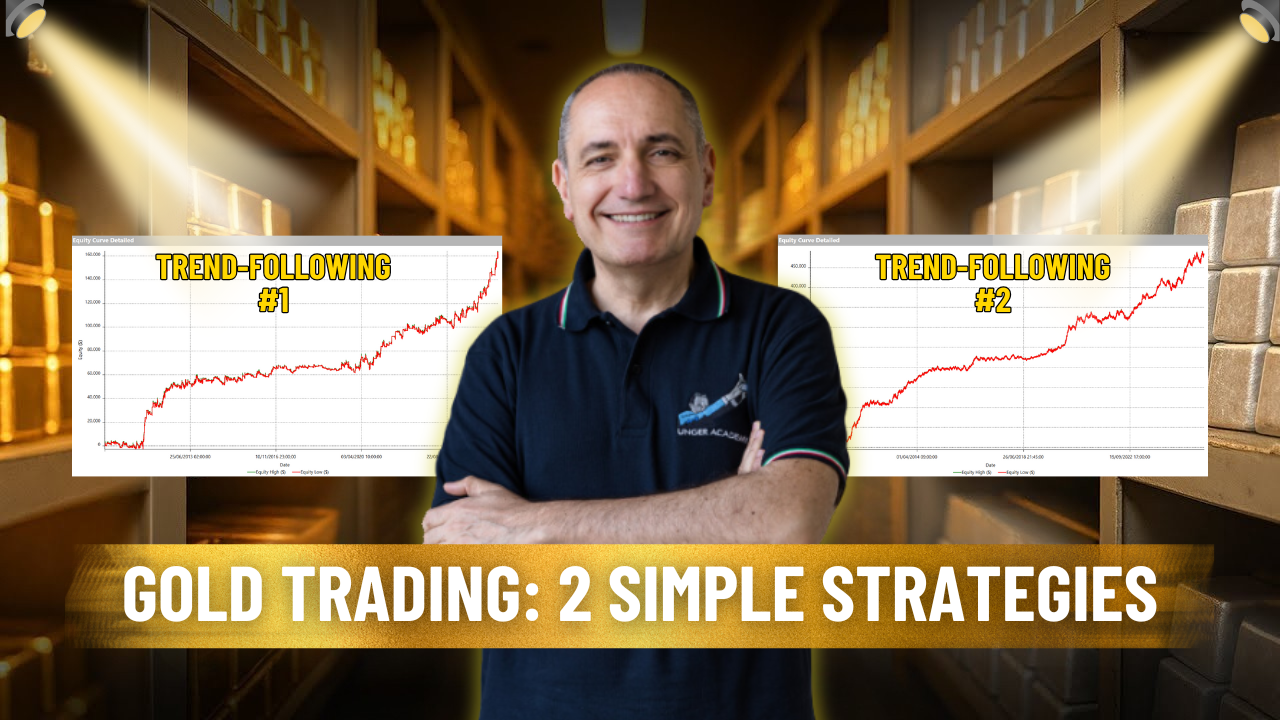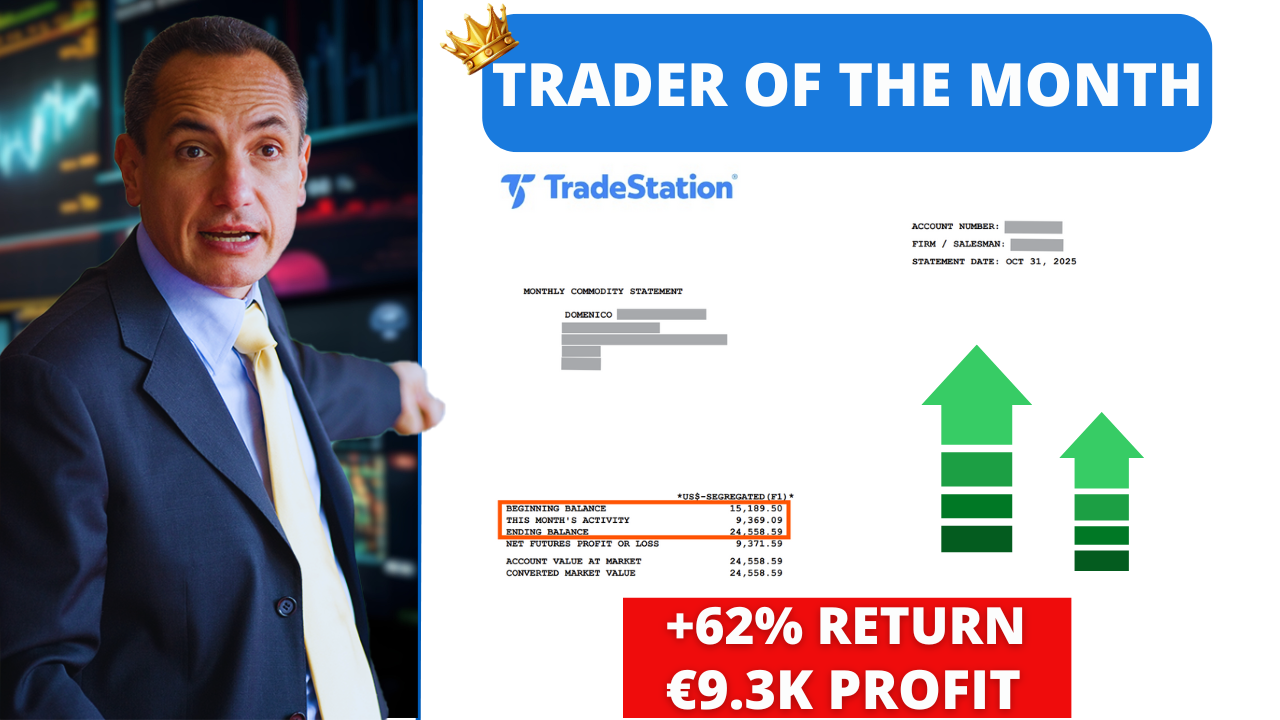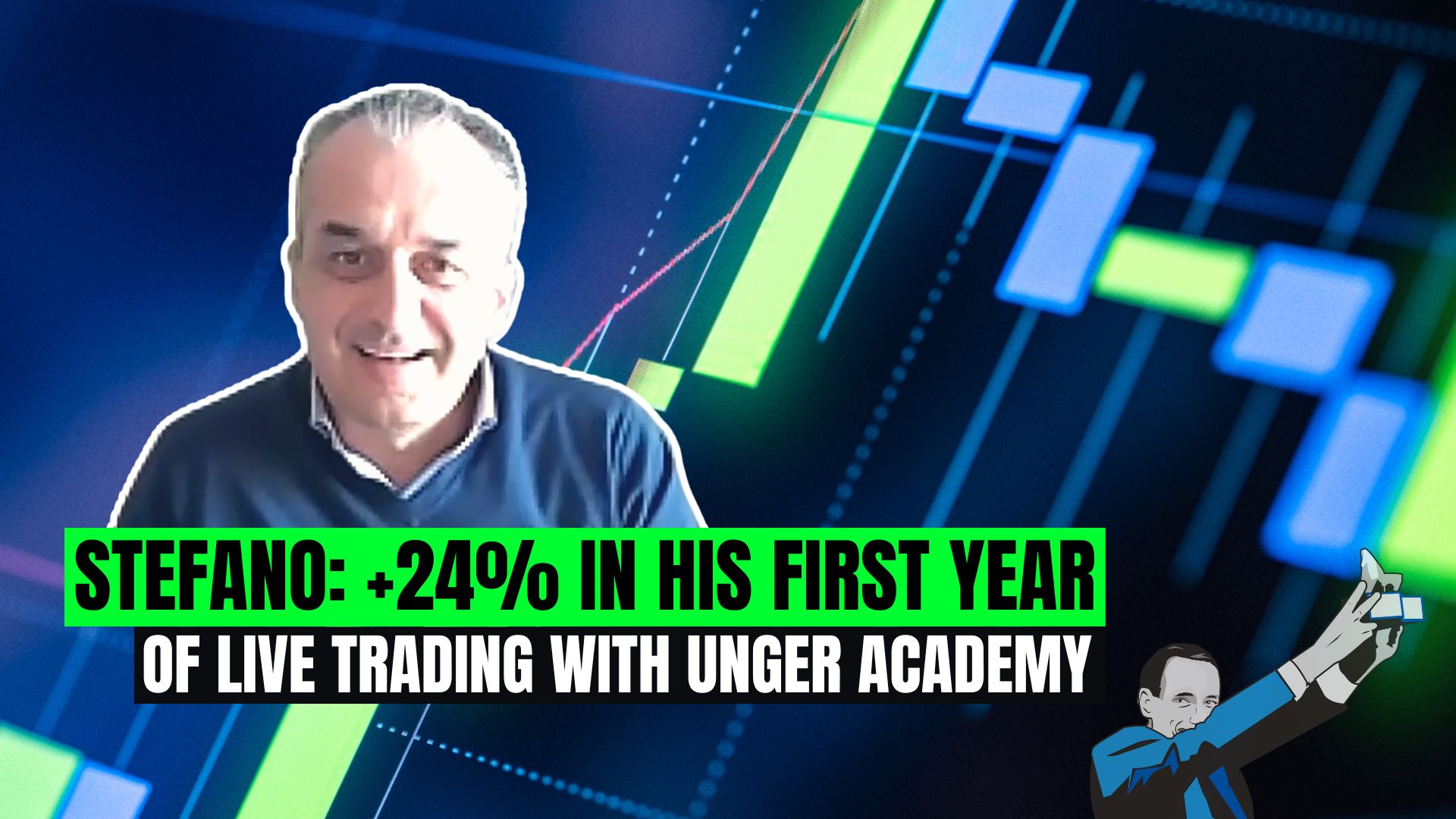Hi guys and welcome to this new video. I’m Davide Tagliabue, one of the coaches at the Unger Academy. Today I want to speak about another very famous indicator for those who work in the markets. It’s called Relative Strength Index, also known as RSI.
Why do I want to speak about this indicator? Well, because I think it’s extremely useful to know how it is built. So as usual, I don’t want to just show you a curve under a chart, but I’d like to tell you how to calculate it step-by-step.
Of course, the goal is to find new edges in the markets and be profitable with our trading systems. After the theoretical explanation, in fact, we will see together a couple of approaches to understand what can be done with this number. Before starting, however, if you haven’t already, I invite you to subscribe to this channel by clicking on the bell so that you can stay updated on the release of new videos.
Up e Down Closes
Now, let’s take a look at the process of calculating this oscillator. First of all, I’d like to point out that, like the ADX, this oscillator was also made by Wilder Welles in the late seventies and it was presented for the first time in the book called “New Concepts in Technical Trading Systems”.
The first concept we need to build this oscillator is the concept of Up and Down Close. Here we can see a classic chart with time bars. So if the Close of today’s bar is higher than the Close of yesterday’s bar we’ll have an Up Close. Here is the positive difference between two closes, and we will call this “Up Close”. The same could be said for the Down Close, that is, when the Close of today’s bar is lower than the Close of yesterday’s bar. This is an example of what can happen… Here it is, this is what we call a “Down Close”.
So let’s define what these Up Closes are in a historical series. In the first case, as you can see, the Close is lower than the Close of the previous bar, so there is no Up Close. So in this case the value is zero. 3.1 is the second value, because today’s Close is higher than the Close of the previous bar. Then we have 0.3 and 0.5. Then we have zero again because the level of this Close is below the Close of the previous day. Zero again and, at the end, 11.1. We can do the same for the Down Closes. So we start with a 5.4, then we have a zero, then another zero, zero again, 3.3, 0.8, and at the end, in the last case, another zero.
So let’s make some considerations about these numbers. As you can see, there can never be a positive number for both the Up Close and the Down Close of the same bar, because obviously, there can never be a close that is both greater and lower than the close of the previous bar. So, we can only have either zero or a positive number.
Relative Strength
Again, once the necessary values have been collected, we can add them together for the purpose of calculating a number that is called “Relative Strength”. This number is nothing more than the sum of the Up Closes divided by the sum of the Down Closes. The sum of the Up Closes, so the sum of the closes that are above the closes of the previous bars, is 15. The sum of the Down Closes is instead 9.5.
In our case, since we are considering 7 bars, the Relative Strength is written as RS7 and is calculated by dividing 15 by 9.5, which makes 1.58. Now, this is not really the division of a sum but rather the division of an average. In fact, we should do: 15 divided by 7 divided by 9.5 divided by 7. However, it’s pretty obvious that dividing both numerator and denominator by the same number we end up with the same results, so we can simply consider the sum of the Up Closes divided by the sum of the Down Closes.
Another observation: we are now going to build a simple moving average. In reality, the construction of the RS takes place through an exponential moving average, so the concept is slightly different and that’s what we find in Wilder Welles’s book, and in the platforms, so on MultiCharts, TradeStation, etc., but I guarantee you that this difference really isn’t that important. What is actually important is that you know where this number comes from. And it comes from an average of closes.
The Relative Strength could be described as the sum of the Up Closes divided by the sum of the Down Closes.
Relative Strength Index
So summing up a little bit what we have found so far, for these 7 bars we got the sum of the Up Closes, the sum of the Down Closes, and the Relative Strength.
Now, the Relative Strength Index is an oscillator that fluctuates from 0 to 100, so its value can only range from 0 to 100. To calculate it we need to transfer the Relative Strength concept on a scale that goes from 0 to 100.
How do we do it? Simply by using this formula, which is very straightforward. Let’s check it out. In our case, we have 100 minus 100 divided by 1 plus 1.58, and then 100 divided by about 2.5 that is 40, so we have a number just below 40. And in fact, 100 minus about 40 is equal to 61.2.
But what does this 61.2 actually mean? Let’s take a guess. Let’s assume that our Up Closes are all null. What does it mean? If I have Up Closes that are all null, it means that all the Closes were actually Down Closes, so none of the Closes has ever been higher than the Close of the previous bar. So if the Up Closes were all equal to zero, the Relative Strength would be equal to zero because it would be zero divided a certain number.
Let’s see what happens when we set the RS equal to zero in this formula. We get: 100 minus 100 divided by 1 plus zero equal to 100 minus 100, and so the Relative Strength Index is equal to zero. So zero identifies a maximum oversold threshold because in this case we have 7 consecutive Down Closes.
Conversely, in the opposite case, we see that the Down Closes are instead equal to zero. So what’s going to happen in this case? I only have positive Up Closes – and no Down Closes – so 7 Up Closes for 7 times in a row. So what’s the RS in this case? It is equal to a number divided by zero, and a number divided by zero is equal to infinity, so we would have an infinite Relative Strength. Going back to the RSI, we have 100 divided by a huge number, which therefore is zero. So 100 minus zero is equal to 100. As you can see, we were able to put a concept of relative strength on a scale from 0 to 100.
When we will analyze the trading system, we will identify two thresholds, the overbought and the oversold one, and these two thresholds will be our entry levels.
We’ll see that when the RSI is below a certain threshold, we are in an oversold situation, so the market is weak. On the other hand, when the RSI exceeds a certain threshold, we are in an overbought situation.
Welles’s settings
Finally, I’d like to show you the parameters recommended by Welles, so the most canonical ones. Now, Welles recommends considering a 14-day time horizon, so considering 14 periods and using daily candlesticks. He also recommends using the Closes. Why do I say that he recommends using the Closes? Because if you think about it, there can actually be other ways to build the RSI. We used the concepts of Up Close and Down Close here, but we could also use the Opens, the Highs, or the Lows. I mean, Welles told us something but we could take the same concept and try a lot of different things.
Conclusion
Okay guys, the first video dedicated to the RSI ends here. Next time we will see together some open-code trading systems that are based on the idea of Welles, both in terms of operations, of the identification of entry levels, and of the use of the RSI as a filter.
If you haven’t done it yet, I invite you to subscribe to the channel and click on the bell in order to remain updated on the release of new videos.
Finally, I’d like to remind you that in the description of this video you can find a link to a free webinar in which we give an introduction on how to build trading systems and create well-diversified portfolios of automated strategies. This is done by following the method of the 4-time World Trading Champion Andrea Unger.
Thank you for watching, and goodbye, see you in the next videos!







